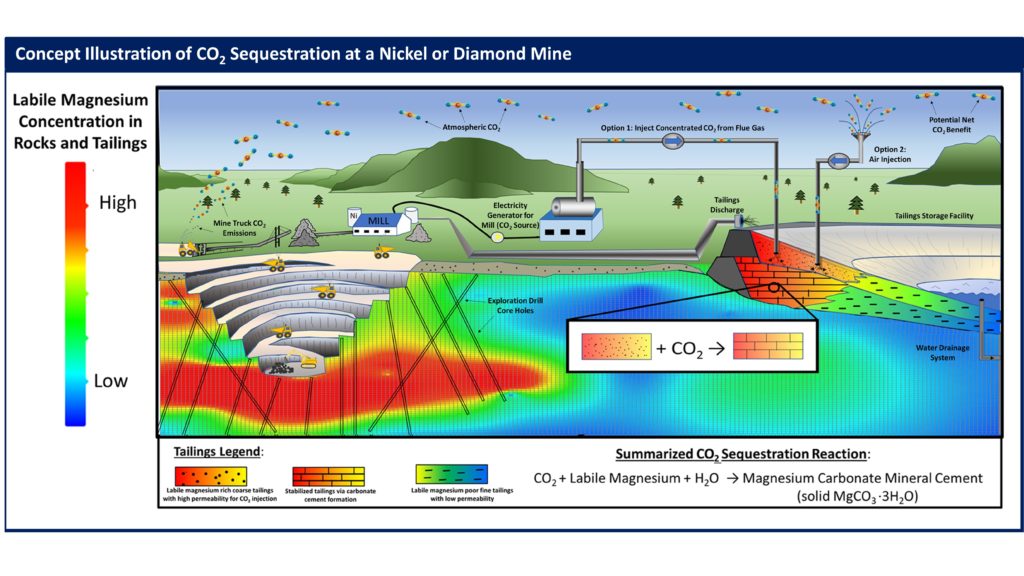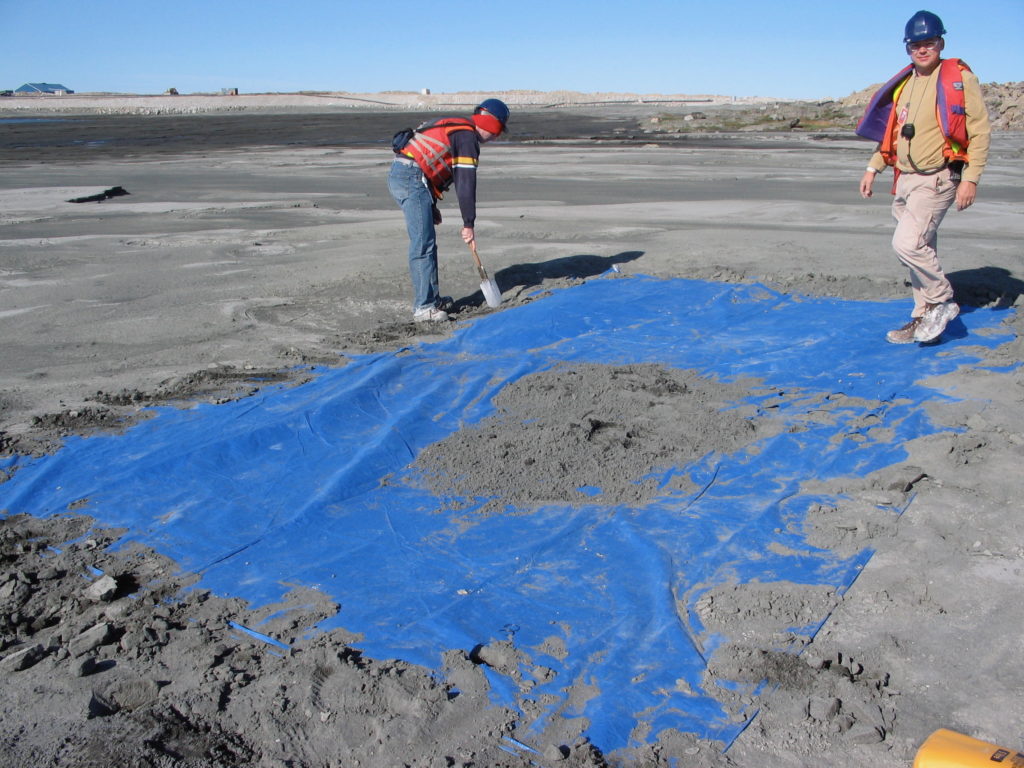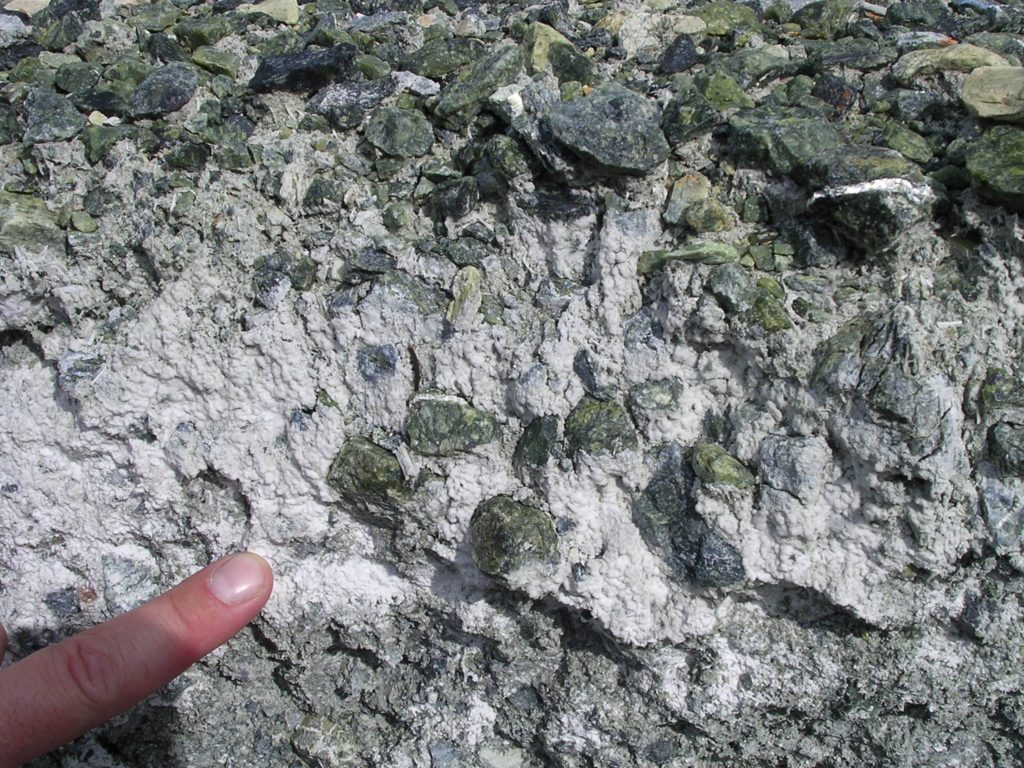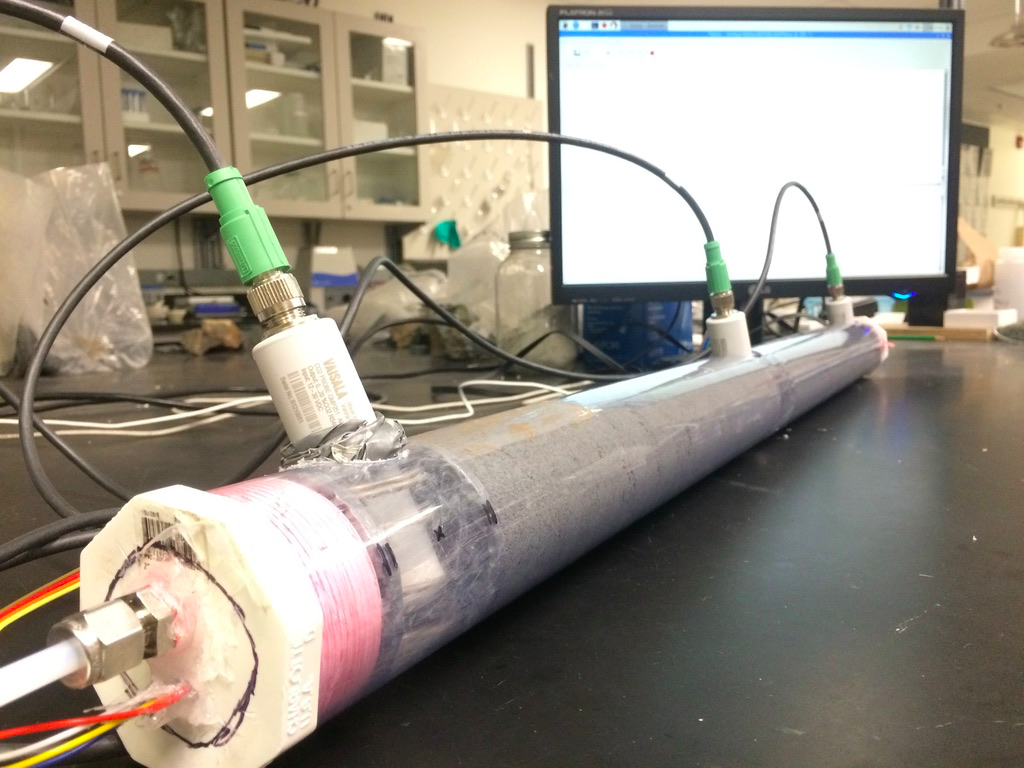Two Canadian mines will pilot University of British Columbia-led research that combats greenhouse gas emissions by trapping carbon dioxide in mine tailings, the waste left over from ore mining.
The technology could drastically reduce the greenhouse gas emissions of mining operations and result in the world’s first greenhouse gas neutral mine.
The project—a collaboration between UBC, the University of Alberta, Trent University and Institut national de la recherche scientifique (INRS) and three leading mining companies—heads to the field this summer with a $2-million boost from Natural Resources Canada’s (NRCan) Clean Growth Program. The funding was announced today in Yellowknife, N.W.T., as part of the program’s investments into clean technology research and development in the Canadian mining sector.
The field trials build on more than a decade of research and will focus on new technologies that maximize the reaction between carbon dioxide (CO2) and magnesium silicate-rich mine tailings, the waste from mining nickel, diamond, platinum and other materials.
In a natural process called carbon mineralization, CO2 reacts with magnesium silicate and hydroxide minerals in tailings. The reaction traps the greenhouse gas into a solid, cement-like mineral, where it can remain in a benign state for thousands of years or more.
“We estimate that reacting just 10 per cent of a mine’s waste stream could be more than enough to offset the annual carbon emissions produced by a mining operation,” said Greg Dipple, project lead and professor at the Bradshaw Research Initiative for Minerals and Mining (BRIMM) at UBC. “This generous funding from the government and support from our industry partners will allow us to move these technologies to a larger scale at active mine sites.”

Conceptual illustration of carbon capture and storage at a diamond or nickel mine. The ore and corresponding mine waste have variable reactivity to carbon dioxide, labelled labile magnesium. Carbon capture activities are best focused on the most reactive materials, corresponding to the hottest colours underground and in tailings. Credit: Sterling Vanderzee

Sampling carbonated tailings at Diavik diamond mine. Credit: Greg Dipple

Carbonated tailings, Clinton Creek mine, Yukon. Credit: Greg Dipple

Simulated mineralization of powerplant exhaust CO2 in laboratory experiments. Credit: Eric Wynands
Field trials will take place at the De Beers Group’s Gahcho Kué Diamond Mine in N.W.T. this summer and at a prospective nickel mine in B.C. in 2020. They will be supported by an additional $1.2 million in funding from De Beers Group, FPX Nickel Corp, Giga Metals Corp and Geoscience B.C. and is supported by the governments of B.C., Yukon and N.W.T.
Efforts in N.W.T. will focus on capturing carbon dioxide produced by the mine’s powerplant, while testing in B.C. will focus on capturing carbon directly from the atmosphere.
“We’ve achieved rapid carbonation within days to weeks in the lab,” said Dipple. “The challenge is to reproduce this success at large volumes in the field.”
In order to achieve results at scale at the active mine sites, the researchers will test more effective ways to identify the most reactive tailings and store them in a way that improves CO2 delivery and reaction.
Co-benefits of the process include stabilizing tailings piles and reducing the amount of dust generated on mine sites.
The current scale of mining of commodities hosted in magnesium silicate rocks would be sufficient to trap between 100 to 200 million tons of CO2 per year if all their waste streams were fully reacted.
“Our work will help to unlock the potential of these minerals as an effective resource for managing greenhouse gas emissions and will contribute to making Canada’s resource sector more environmentally and economically sustainable,” said team member Sasha Wilson, associate professor and Canada Research Chair in Biogeochemistry of Sustainable Mineral Resources at the University of Alberta.
In the future, the team hopes to expand the technologies to include other types of rocks.
Multimedia assets
Quotes
“The Government of Canada supports the development of innovative, clean energy technologies in Canada’s mining industry. We continue to invest in research initiatives like this project, led by the University of British Columbia, to reduce greenhouse gas emissions and help Canada transition to a clean energy future.” Michael McLeod, Member of Parliament for Northwest Territories.
“This generous funding will support academic, government and industry partnerships aimed at developing clean technology solutions for the mining industry. These investments will help our researchers and partners find solutions to the pressing challenge of reducing global greenhouse gas emissions in scientifically and economically innovative and important ways.” Santa J. Ono, President and Vice-Chancellor at the University of British Columbia.
“My team at Trent University is leading research to investigate direct capture of CO2 from the atmosphere through enhanced weathering and carbonation of mine wastes from diamond mines. Our field trials will be used to develop innovative management practices that can be seamlessly incorporated into mines of a variety of commodity types to reduce their net greenhouse gas emissions.” Ian Power, Assistant professor and Tier 2 Canada Research Chair in Environmental Science at Trent University.
“This is a very important contribution to the development of future mining operations that are sustainable and carboneutral. My group at INRS is thrilled to participate in this project, which will allow a better understanding of the interactions between a flue gas and mining residues in natural conditions. This is also a wonderful collaboration between research teams that will strengthen the expertise on mineral carbonation in Canada.” Louis-César Pasquier, Assistant professor at INRS.
“We are immensely proud of this collaborative piece of work between industry and academia, and with excellent progress in the project to date there is great potential to achieve carbon-neutral mining operations at sites where this type of rock is present.” Bruce Cleaver, CEO of De Beers Group.
“We are delighted to be supporting this important initiative. We are particularly pleased to note that field work on assessing the potential for carbon sequestration toward carbon-neutral mining is planned to include extensive study at our Decar nickel project in central British Columbia. We look forward to the results of this research program, which marks an important milestone in the development of sustainable practices in the mining industry.” Martin Turenne, President and CEO of FPX Nickel Corp.
“Geoscience BC is excited about funding collaborative research to advance science and innovative technologies. This project will allow us to better understand natural ways to manage greenhouse gases. Our contribution to this minerals research will result in a ‘carbon sequestration potential index’ for rocks in British Columbia, which will help to take this promising applied geoscience to the next level.” Christa Pellett, Vice President, Minerals at Geoscience BC.
